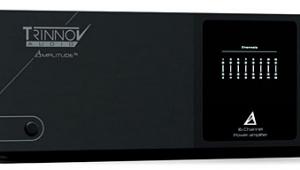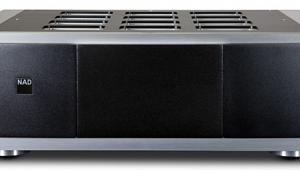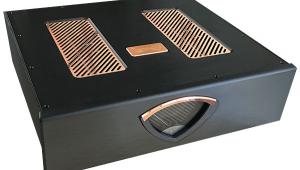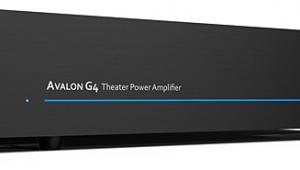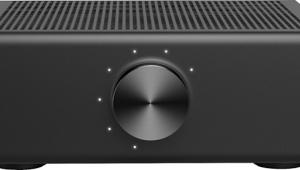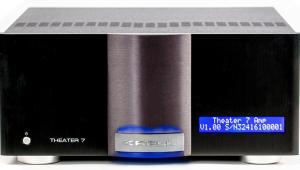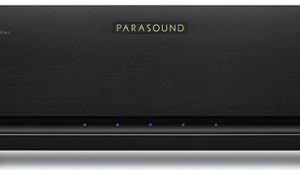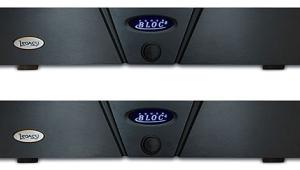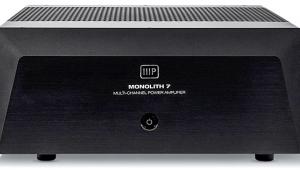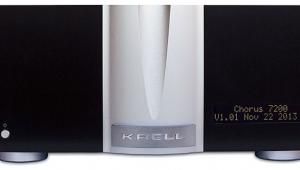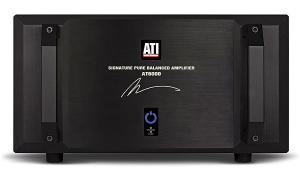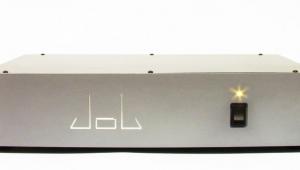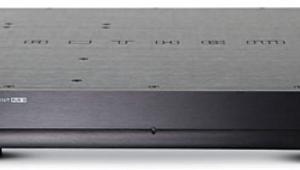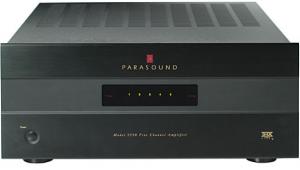Other amp reviews in a similar timeframe that include bench testing also include THD, SNR, crosstalk etc numbers. It would be great to see those for the Legacy Audio Powerbloc2 and Powerbloc4.
Legacy Audio Powerbloc2 and Powerbloc4 Amplifiers Review Page 2
In that light, Legacy’s two-channel Powerbloc2 needed to at least produce no change relative to my everyday power source, a mid-’phile-priced, 150-watt-per-multichannel Class A/B power amp of generally accepted competence. This it did with evident ease. On material like the Pretenders’ “Mystery Achievement” (HDtracks 96/24 download), the sound was exactly as it should have been—which is to say, sharp and crunchy, with ample brightness and clarity to etch transients like the busy snare and shaker, without any trace of harshness or strain. I switched between my own amp and the Powerbloc2 over several sessions—easy enough to do, with only two channels—without hearing any dramatic difference. Was the Legacy amp perhaps a fraction “easier” on big transients like rim-shots and brass attacks? It’s tempting to say so. The Pretenders’ self-titled album is minimally dynamic; small-combo jazz played at first-table club volumes makes a much better option to expose any sonic characteristics. On a familiar track like the bebop-tinged “Origins” from Phil Woods’ Here’s to My Lady, I found no such characteristics in the Powerbloc2; this is good news, not bad. Ride cymbals were clear and shimmery, while Woods’ unmistakably plangent alto sax soared through its occasional accents, and off-beat snare explosions came through with no hint of impediment.

Even better, The Sheffield Track & Drum Record, which must be going on 35 years old by now, is still a valuable reference in my world. I cued up my CD copy and listened, all the way through, to the great Jim Keltner’s seven-minute drum improvisation, at realistic, live-room levels, and I heard not a trace of the dynamic squish or leading-edge flattening that a lack of dynamic headroom imparts. (If there’s anything in audio that’s better than listening to uncompressed, unsweetened, naturally recorded traps, played solo by a master, I don’t know what it is.) The totally convincing realism of each leadingedge ping of a cymbal strike and the palpable puff of air impacting from each accented kick-drum hit were emblematic of a good system operating without dynamic limitation.
To wit: 325 watts may seem like a lot of power, but consider. In my system, 3 watts are probably about what’s required to produce 86 decibels SPL from my fairly low-sensitivity Energys at my 3-meter-distant listening position. Twenty decibel-watts above this is 300 watts, and given that peak levels of (potentially) 106 dB SPL on musical transients are probably not the least bit unusual, that’s by no means excessive power. At full-orchestra concert-hall (let alone modern rock-concert) levels, 3 dB more (600 watts) or even 6 dB more (1,200 watts) may not be out of the question. This is why, other things being equal, more power is always—always—better than less power. Where the rubber actually meets the road, more power gives amplifiers the potential to “sound different.” In that light, the Legacy amps don’t “sound like” anything, other than the system to which they’re connected and the recording being applied to them. Which is all I ask of any amplifier.
More Channels
I’m sorry to be disappointingly anticlimactic, but the plain fact is that moving on to multichannel listening revealed nothing new. I employed all six Legacy channels in driving my mixed-breed but highly effective speaker layout, including a single small two-way dragooned into temporary, single-speaker back-surround duty (I don’t usually find back-surrounds necessary in my studio). I ran all channels full range (no subwoofers) in order to stress the power amps as much as possible. And what I heard was simply more of the same. A reference multichannel-music disc like Mahler’s Symphony No. 1 on a Telarc SACD sounded goose-bump believable at real-concert levels, while a succession of familiar movie scenes delivered the expected filmsound—unrestricted, uncolored, and as loud as I cared to hear (and a very good deal louder). For one familiar instance, the cannonpractice sequence from Master and Commander delivered each report’s leading-edge crack with no crisping, up to a few good decibels louder than any rational actor would ever ask for. I even went to the extreme measure of connecting every channel but the center to a dummyload resistor instead of a loudspeaker, in an effort to isolate a single channel while still fully loading the amp, to get a handle on the Powerbloc4’s clipping behavior. But even this (possibly hare-brained) scheme proved inconclusive: Even with just the one speaker playing, levels were too high to reliably discriminate amplifier limits from straining loudspeakers or acousticoverload in my hearing.

Convinced, I simply settled in and cued up London Has Fallen, an unfamiliar film (and about as wooden, formulaic, and relentlessly violent as you’ll ever find), and I enjoyed a pristine, crystal-clear, and endlessly dynamic movie soundtrack at true high-end commercial-cinema levels. As a side note, it was surprising how satisfying the sound was without a subwoofer. My main left/right Energys have solid output to a bit below 35 hertz or so in my room but then roll off steadily. By no means did I feel bass-deprived through the relentless mayhem: The endless parade of CGI explosions may have been fake, and looked it, but they didn’t sound it. At the end of the movie, the two Legacy amps—which I had stacked atop my rack—were moderately warm but far from hot.
The Powerblocs’ pricing places them smack in the middle range of new Class D amps—not exactly cheap, but far from expensive in this context. At day’s end, about the only complaint I can summon against Legacy’s amps is their configurations. With only two- and four-channel options, supplying a five- or seven-point-whatever system means a single channel is doomed to idleness. I think I see Legacy’s problem, however. A single-module, one-channel ICEpower design would necessarily be almost as expensive as a two-channel one. A three-channel job would be too specialized, and five- or seven-channel models would mean mixing mono and stereo modules. And in fairness, Legacy conceived the amps as much for biamplifying individual or paired loudspeakers—Legacy’s own, mostly—as for multichannel. In every other respect, Legacy’s promise of serious power at a fair price is honestly made and fully delivered.
- Log in or register to post comments


MJP, thanks for the nice review ... but a few things are off or odd.
1. The distortion specs you measured, though respectable, are 10x -20x higher than legacy specs. The spec 0.005% THD at rated output (325W) but you measured 0.1%, a 20x increase from their spec and yet this was never mentioned.
2. The measured output power at their rated distortion does not measure up to Legacy's specs.
3. Where are the SNR, Xtalk, IMD numbers?

Parasound uses the same class D modules in their ZM 2350 amp and their specs match these measurements. Legacy must've done something to skew their results!

While others are complaining about the extent of the measurements, I'm surprised and slightly relieved to see any measurements at all. It's been a while since S&V published any measurements. I hope you maker this the rule, and not the exception.

